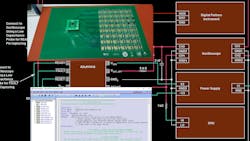IBIS Modeling (Part 3): How to Achieve a Quality Level 3 IBIS Model via Bench Measurement (Download)
The Input/Output Buffer Information Specification (IBIS) is a behavioral model that’s gaining worldwide popularity as a standard format to generate device models. The device model’s accuracy depends on the quality of the IBIS models offered by the industry. Therefore, providing quality, reliable IBIS models for signal-integrity simulations is a strong commitment to the customer.
One way to generate IBIS models is through simulations. However, in some cases, the design files aren’t available, making it impossible to generate IBIS models from simulation results. In such instances, generating IBIS models via bench measurement can fill that gap, offering a high-quality and more realistic device behavioral model.
